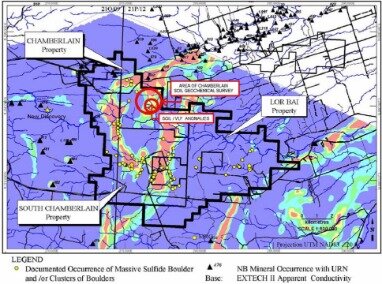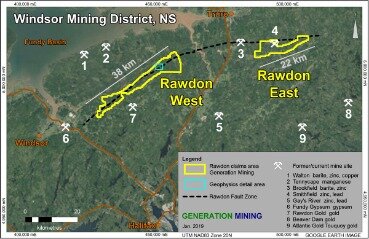Biosphere Mapping Of Lead Pollution Though Time
Content
Linear calibration curves over the range 50–350 nmol L−1 for both ions were achieved, with detection limits of 9.2 and 10 nmol L−1 for cadmium and lead, respectively, after applying a 180 s pre-concentration step. Nafion polymer coated BiFMEs were used for decreasing the adsorption of surfactant contaminants, tested with cetyltrimethylammonium bromide , Triton X-100 and sodium dodecyl sulfate in SWASV of the metal ions. This strategy allowed determination of these trace metal ions in environmental samples, and was employed to determine successfully the concentration of Cd and Pb in samples of mine effluents. During the mining so many ancient stone tools were found that the news reached the archaeologist Professor Raymond Dart in South Africa. Dart sent a knowledgeable colleague called Adrien Boshier to investigate these finds and report back.
Pb concentrations and isotope composition will be analysed and mixing models of ingested sources – geogenic vs anthropogenic pollutants – will be produced. This will map the potential Pb-related health risks to populations in areas of mining activity and legacy mines to the present day. Central Britain is dominated by the Pennine Hills and includes areas of outstanding natural beauty, such as the Peak District National Park, known internationally for its ‘pristine’ landscapes and conservation areas. However, in the past, the area was better known for industry as intensive lead mining and smelting took place from the Roman Period onwards. As Pb is a naturally occurring toxin, it is likely one of the earliest anthropogenic environmental contaminants and widespread use has resulted in global environmental contamination, human exposure, and significant public health problems. This project will map changing biosphere -animal-Pb interactions in the Peak District from the Neolithic to the present day.
Central Asia Metals
The Kangerluarsuk Zn-Pb-Ag project is located within the Karrat Group, a major Palaeoproterozoic sedimentary basin with abundant Zn-Pb-Ag (± Cu) showings. The Karrat Group hosts the former Black Angel Zn-Pb-Ag mine which produced 11 million tonnes at 12.6% Zn, 4.1% Pb and 29 g/t Ag during operation by Cominco ( ) and later Boliden ( ). The mine is situated only 10 km south of Bluejay’s new licence area (Fig. 1a).
The Solway Investments Group subsequently purchased the mine, invested in new equipment and operations resumed in 2006. Solway Group later sold the mine to Fusion Capital and Orion Mine Finance Group in 2015.
Documents For Toranitsa Zn
The ZTEM data supplements an earlier 435 line-km helicopter-borne DIGHEMV electromagnetic survey commissioned by Platinova in 1997. Three of the conductive bodies are coincident with the strongest surface geochemical anomalies and are considered the highest priority drill targets. Thus, several independent methods have been combined to pinpoint drill-targets that are now ready to be tested through a maiden drill programme in 2020. This includes a relatively low-cost maiden drilling campaign which will target known zinc, silver, lead, silver and copper occurrences that have correlations with the neighbouring former Black Angel zinc-lead-silver mine.
/ Mehta, Neha; Lasagna, Manuela; Dino, Giovanna Antonella; De Luca, Domenico Antonio. Mehta, Neha ; Lasagna, Manuela ; Dino, Giovanna Antonella ; De Luca, Domenico Antonio. / Quality of water in two areas affected by past mining activities in Alpine context. Poster session presented at Flowpath, 3 National Meeting on Hydrogeology, Cagliari, Italy.1 p. Poster session presented at Flowpath, 3 National Meeting on Hydrogeology, Cagliari, Italy. Dive into the research topics of ‘Quality of water in two areas affected by past mining activities in Alpine context’.
It is estimated that in excess of a thousand persons worked within a mile of Relubbus Bridge, the miners having a life expectancy of less than 40 years on average. Women and children from the age of six years were employed in the ore processing work at surface without shelter in all weathers. The locality is a prolific source of rare and unusual secondary minerals of which the Cu-Pb-Fe arsenates are the best known.
- Sasa lies within the Serbo-Macedonian Massif, which hosts a large number of lead and zinc deposits and extends through Serbia, North Macedonia, Bulgaria, eastern Greece and into Turkey.
- Some unusual hopper-faced galena crystals are present on old specimens in the National Museum of Wales Collection from the Trelogan Mine in the northern part of the orefield.
- From the second half of 2022 the Sasa team will transition to a new mining method, cut and fill stoping, with approximately 90% of ore being extracted using this method by 2024.
- Fletcher interpreted this to indicate an Early Jurassic age for the lead mineralization of this orefield.
The results that came back were astounding, dates of around 41,000 to 43,000 were obtained. Later from another early mine complex the buried skeleton of a child was dated at over 50,000 years. When Europeans first visited the area around Postmasburg in the Northern Cape around 1800 they found various sites where mining of red ochre and specularite had taken place. Local people such as the Tswana and Hottentots were familiar with these workings but mostly they attributed the tunnels and shafts to the ‘old people’, the Khoisan.
The Lead Legacy: The Relationship Between Historical Mining And Metallurgical Activity, Pollution And Health, 1730
This integrated approach offers a future model of assessment that can be generalised to other industrial practices and geographical locations both nationally and internationally. The Derwent Valley Mills World Heritage Site exemplifies and records the 18th century birth of the factory or mill technology, and for the industrial spinning of cotton.
The little man squeezed out from a crack in the rock and stood blinking in the bright African sun. As he snuffed out his makeshift wick light, another red stained miner popped out to join him. Together they turned and carefully blocked and then concealed the mine entrance. Satisfied that the entrance was not now easily visible to the casual observer they examined the material they had excavated and then packed away their tools and specimens.
What Boshier found was amazing, specialised stone tools made of dolerite, which is not a local stone, had been left behind by the early miners. These choppers, picks and hammerstones were not just on the surface but also deep underground.
Then approximately 30% of tailings will be stored in the current Tailings Storage Facility 4. CAML is advancing studies with a view to dry stacking the remainder tailings and eliminating the future use of tailings dam facilities.
The Derbyshire Derwent catchment also contains another significant cultural asset with a long history – that of mining and, in particular, lead mining. In this paper research on mining- and non-mining related Pb contamination of the Derwent catchment is reviewed and used to identify the risks it poses to the DVMWHS. The upper Derwent soils, though not impacted by mining, have high sediment-borne Pb concentrations, and the Pb is sourced from local conurbations and carried to the upper Derwent on the wind. River sediments in the middle and lower parts of the Derwent catchment are contaminated with Pb mined mainly between the 18th and 19th centuries and before, possibly as far back to the Bronze Age. Focused collaborative work between archaeologists, geochemists, geomorphologists and mineralogistsis vital if the risks to the DVMWHS and other similarly-affected World Heritage Sites are to be quantified and, if necessary, mitigated.
The processing plant then operates both lead and zinc flotation processes, producing separate concentrates that are filter pressed to produce products containing 5-9% moisture. The lead concentrate contains c.73% lead and the zinc concentrate contains c.49% zinc. The concentrates are stored in two separate bays before being loaded into haulage trucks for sale to smelters. The Sasa deposit was discovered during a period of exploration between 1954 and 1965.
Hydrothermal fluids and bedding parallel faulting are responsible for the metasomatism of the host sediments that produce the skarn and base metal mineralisation. The deposits are well defined lenses of lead zinc silver mineralisation, which dip at about 35 degrees and range in thickness from 2 metres to 30 metres. The mineralization consists of three sub-parallel zones, each composed of two to three lenses. Most of the mineralization lies in the contact zone between the graphitic schist and underlying quartz latite, or overlying gneiss, but also with some mineralization in the middle of the graphitic schist zone. Quality of water in two areas affected by past mining activities in Alpine context.
Further down the lane, the cottage on the left was part of mine buildings, most long since demolished. This continued at least half a mile on the course of a mineralised lode called an “Elvan Dyke” and later was utilised to unwater “Wheal Susan” and Bosence mines near Townsend. Drainage water from “Wheal Fancy” situated in the field opposite the cottage, used to be carried over the Hayle River in wooden canals called “Launders” and used to drive waterwheels in what is now the cottage garden, but was once, a small ore dressing plant. A new bismuth-coated carbon fiber microelectrode has been developed and used for the determination of Cd and Pb by square wave anodic stripping voltammetry . The results indicate that cadmium and lead ions give well-defined SWASV peaks with no interference.
Some of these tunnels extended over 100 metres underground and into areas where specularite was available. This mineral was more highly prized than either ochre or haematite and could be widely traded with other people who were not fortunate enough to have a source in their area. this was formerly an important lead-mining district which produced significant tonnages of lead ore concentrates and in addition some fine specimens, particularly from the Trecastell Mine.
To the South was a run of mines From “Penburthy Crofts” on Long Lane running through to the mines of Marazion marshes. If the material has been adapted instead of reproduced from the original RSC publication “Reproduced from” can be substituted with “Adapted from”. Authors contributing to RSC publications do not need to formally request permission to reproduce material contained in this article provided that the correct acknowledgement is given with the reproduced material. If you are not the author of this article and you wish to reproduce material from it in a third party non-RSC publication you must formally request permission using Copyright Clearance Center.
Phytoremediation: A Tool For Restoring Land Degraded Due To Opencast Coal Mining
Significantly the recent mapping by GEUS highlights the presence of previously unrecognised exposures of Qaarsukassak Formation, up to 40m thick, within Bluejay’s licence areas which have the potential to host mineralisation. Tectonic repetition of the Qaarsukassak Formation through thrusting is also recognised. galena occurs widely as part of the sulphide assemblage occupying siderite-lined voids in septarian ironstone nodules . Some excellent specimens showing bright galena cubes encrusting millerite needles have been collected from both coal-tips and modern opencast workings. Other associated sulphide minerals are siegenite, sphalerite and chalcopyrite. galena is of frequent occurrence in the gold-lodes of this area, but attempts to mine it were generally ill-fated , this being largely due to the abundance of other finely-intergrown sulphides, in particular sphalerite. Of note is the frequent association between gold, galena and telluride minerals, exemplified in the high-grade ‘bonanza’ ores mined at Clogau (Mason et al., 2002).
Trial mining commenced in 1965 and, in 1966, the mine commenced commercial production as a state-owned entity. The mine closed in 2002 and was placed into bankruptcy due to lack of funding.
Particular attention is paid to gaining an understanding of the fundamental physics of these systems and using this knowledge to build models that can improve industrial processes. We have both modelling/simulation and experimental projects on offer, many of them sponsored by major mining companies. East of Relubbus Bridge were extensive water wheel driven banks of large mechanical hammers called “Stamps”. These pulverised the ore rock into gravel so that further very extensive washing processes could separate the valuable minerals.
The Company intends to commence a maiden drill programme at the Project later this year, representing the first drill testing ever conducted at Kangerluarsuk, alongside additional exploration activity as part of its 2020 field season. Volcanogenic mineralization related to the Snowdon Volcanic Group , Gwynedd, North Wales. in the Snowdon caldera galena is common, generally in modest amounts, in the copper-dominated veins of this mining district (Reedman et al., 1985). Tailings from the Sasa processing plant are stored in storage facilities on site. With the commencement of cut and fill stoping approximately 45% of Svinja Reka’s life of mine tailings will be stored underground and as of the backfill.
In order to achieve this, a backfill plant will be constructed, along with associated reticulation pipework to transport this material underground. Tailings from the processing facilities will be sent to the backfill plant to be thickened and pressed to contain 80% solids, and then mixed with a slurry containing cement, fly ash and water to produce a paste of the appropriate consistency. The Cut and Fill Project has been approved by the Board and the transition to the new mining method will take effect in the second half of 2022, with approximately 90% of ore being extracted using this method by 2024. In order to move to cut and fill stoping and therefore ensure effective long-term operations for the life of the mine at Svinja Reka, several practical changes will be implemented at site. From the second half of 2022 the Sasa team will transition to a new mining method, cut and fill stoping, with approximately 90% of ore being extracted using this method by 2024. The voids will then be backfilled with paste material containing tailings to provide support, rather than allowing the roof to cave as is the case with the current sub-level caving method. Orebodies dip variably , range in thickness from 0.2-40m and can be traced for up to 1,000m.













